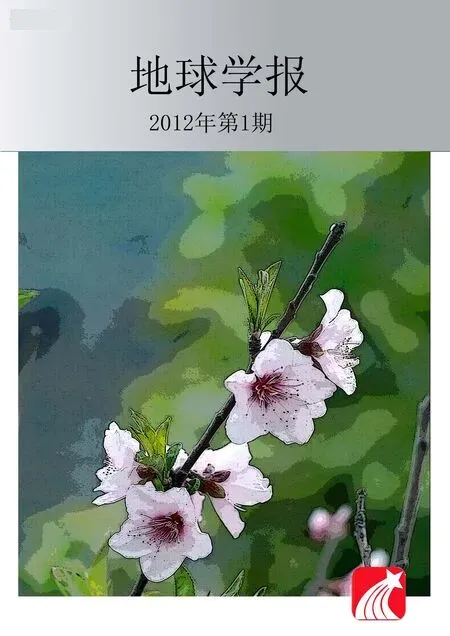泰国北部Inthanon带混杂岩碎屑锆石U-Pb年龄及碎屑岩岩石学和地球化学研究:对古特提斯消减和汇聚的启示
泰国北部Inthanon带混杂岩碎屑锆石U-Pb年龄及碎屑岩岩石学和地球化学研究:对古特提斯消减和汇聚的启示
The accretionary complex related to the Paleo-Tethys subduction was developed along western margin of the Indochina Block in northern Thailand.The provenance, source rock compositions, and sediment supply system of the accretionary complex were reconstructed based on the petrography and geochemistry of clastic rocks, U-Pb dating of detrital zircons.
Microscopic observations indicate that the sandstones of the mélange are lithic wacke, with some lithic arenite. Based on Qt–F–L and Qm–F–Lt ternary diagrams with the tectonic fields proposed by Dickinson et al. (1983), the lithic sandstones plot in the ‘recycled orogen’ field. Based on the La–Th–Sc and Th–Sc–Zr/10 ternary diagrams of Bhatia and Crook(1986), most of the lithic sandstones and shales from the mélange of present study cluster within the ‘continental island arc’ field, with a few samples plotting in the ‘passive continental margin’ field. The results of a mixing model indicate the source rocks were approximately 35% volcanic rocks of the Sukhothai Zone and 65% craton sandstone and upper continental crust. Lithic sandstones were derived from continental island arc and continental margin settings, corresponding to felsic volcanic rocks within the Sukhothai Zone and quartz-rich fragments within the Indochina Block, respectively.
We also examined U-Pb ages (LA-ICPMS) of detrital zircons of sandstone collected from the accretionary complex. Peaks of detrital zircon U-Pb ages are distributed in Neoarchean, Paleoproterozoic, and the Grenvillian and Pan-African periods, presenting a similar pattern of circum-Paleo-Tethys subduction zones. Old zircons were generated from the Indochina Block. Additionally, youngest peak of U-Pb ages present a variation such as Late Carboniferous, Early Permian, Late Permian–Early Triassic, and Triassic.An island arc in the Sukhothai Zone evolved in tandem with Permian–Triassic forearc basins and volcanic activity during the Middle–early Late Triassic.Young zircons during the Permo–Triassic were provided from the Sukhothai Zone, related to development of island arc.
In terms of Paleo-Tethys subduction, a continental island arc in the Sukhothai Zone evolved in tandem with Late Permian–Triassic forearc basins and volcanic activity during the Middle–early Late Triassic.The accretionary complex formed contemporaneously with the evolution of continental island arc during the Permo–Triassic, supplied with sediment from the Sukhothai Zone and the Indochina Block. Additionally,detrital zircon ages are supported this multiple supply system such as Permo-Triassic zircon from the Sukhothai Zone and Proterozoic zircon from the Indochina Block.
E-mail: hara-hide@aist.go.jp.
Petrography and Geochemistry of Clastic Rocks, U-Pb Ages of Detrital Zircon from Mélange within the Inthanon Zone, Northern Thailand: Implications for Paleo-Tethys Subduction and Convergence
Hidetoshi HARA1), Miyuki KUNII2), Ken-ichiro HISADA2), Katsumi UENO3),Yoshihito KAMATA2), Punya CHARUSIRI4), Thasinee CHAROENTITIRAT4)
1)Geological Survey of Japan, AIST, 1-1-1 Higashi, Tsukuba, Ibaraki305-8567,Japan;
2)Graduate School of Life and Environmental Sciences, University of Tsukuba, Ibaraki305-8572,Japan;
3)Department of Earth System Science, Fukuoka University, Fukuoka814-0180,Japan;
4)Earthquake and Tectonic Geology Research Unit, Chulalongkorn University, Bangkok10330,Thailand
U-Pb Age; detrital zircon; Inthanon zone; Northern Thailand
10.3975/cagsb.2012.s1.08
——碎屑岩油气储层叠覆式沉积模式创建与应用

